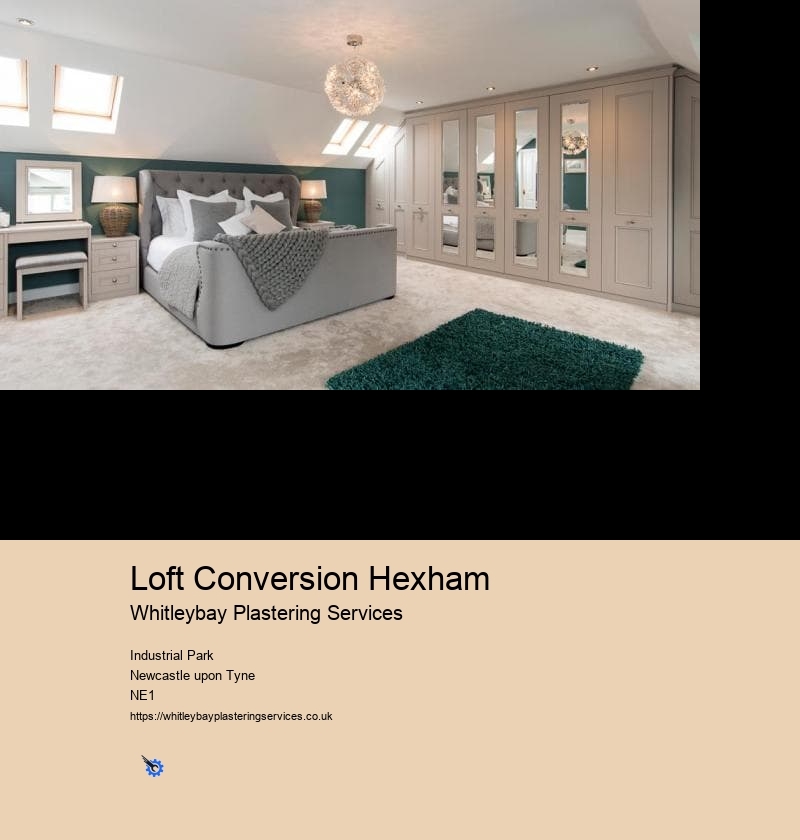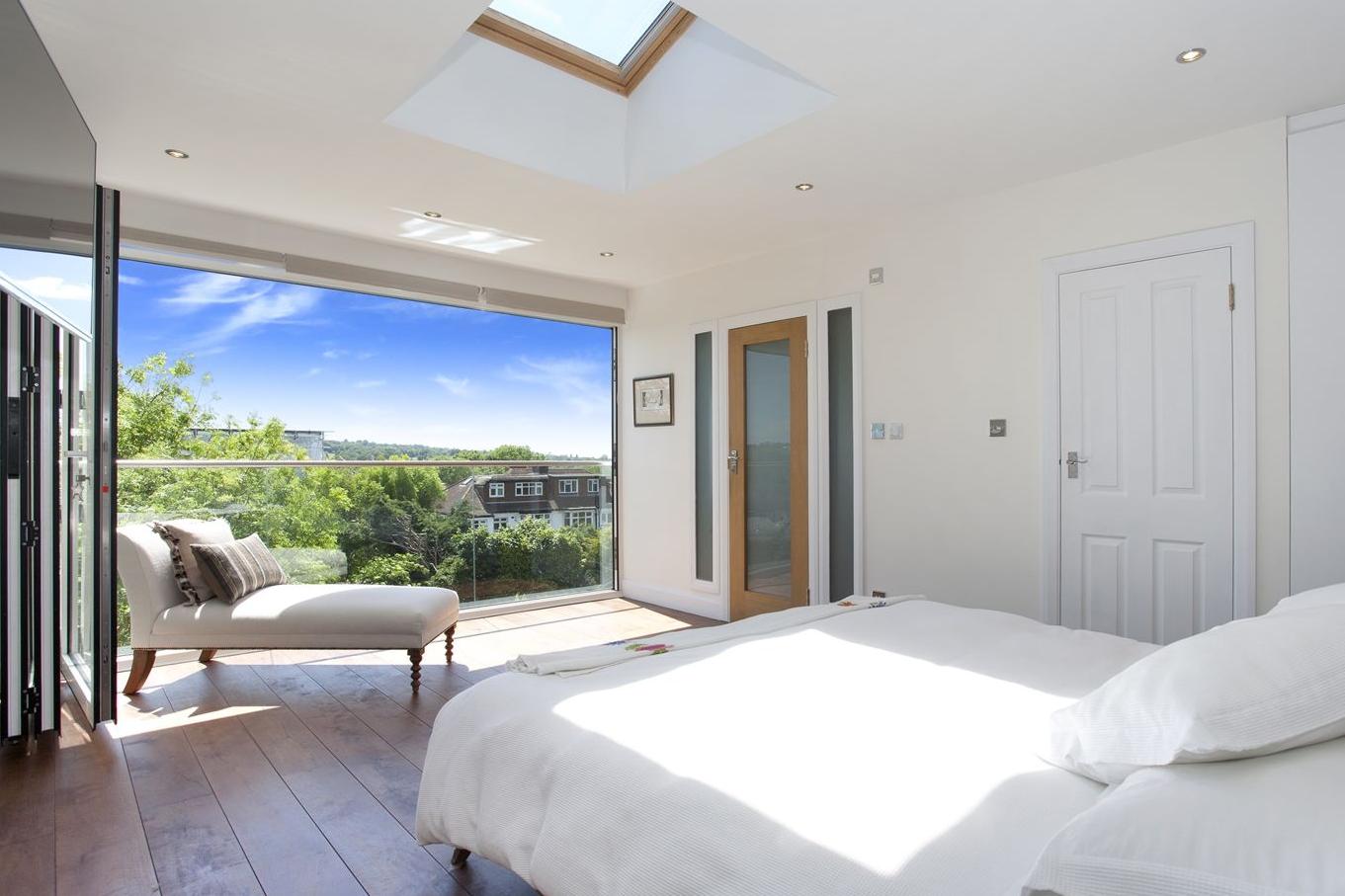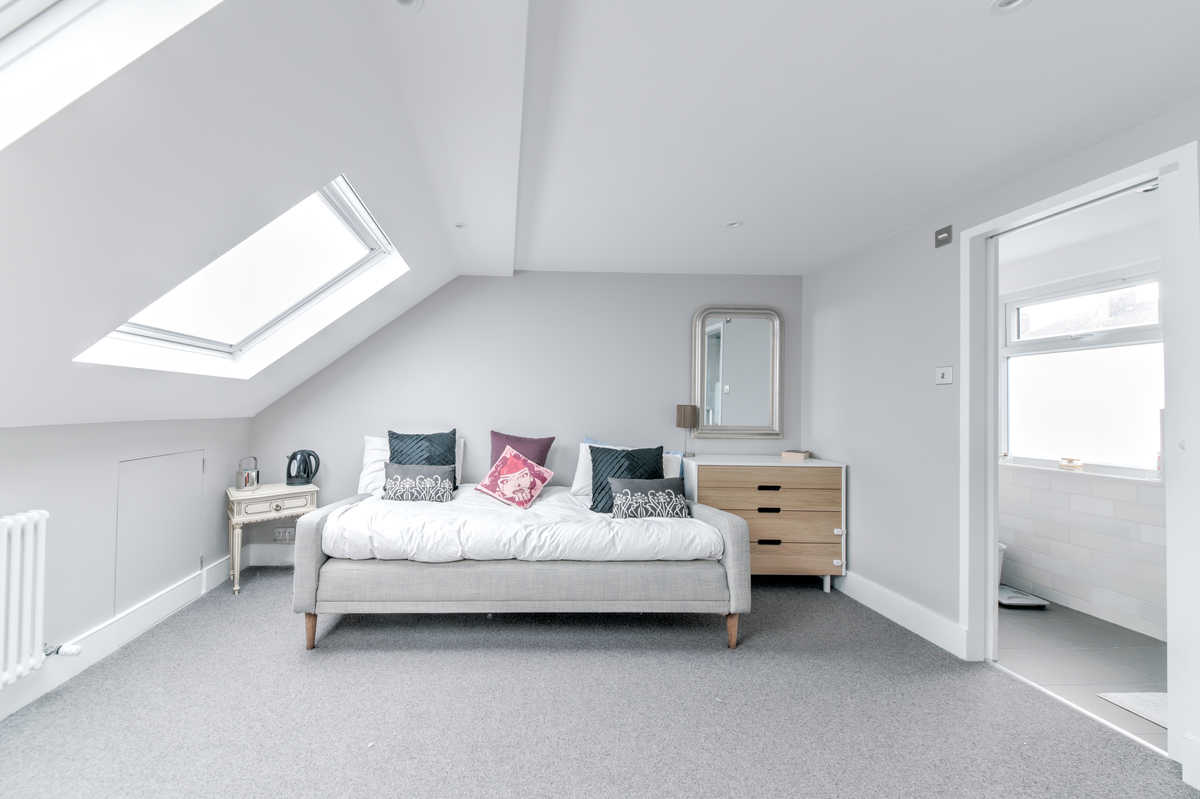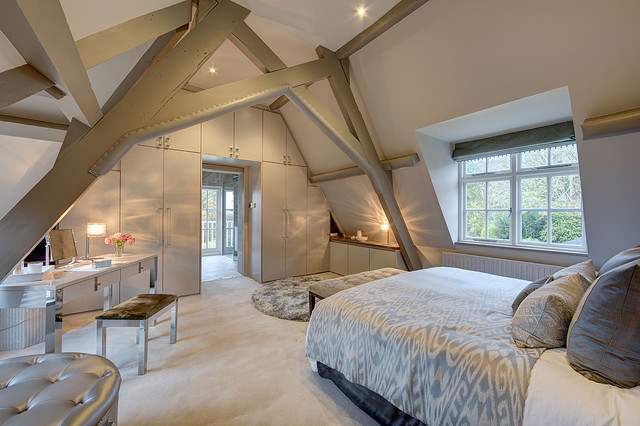Loft Conversion Hexham
Loft Conversion Newcastle-upon-Tyne
In conclusion, a loft conversion in Newcastle-upon-Tyne is a great way to add value to your property, and create an extra bedroom. The cost of a loft conversion will vary depending on the size, type and materials used, but generally speaking it will cost between £15,000 and £25,000. It is important to remember to consider the layout of the room, the type of insulation and the type of stairs you will need to access the room.
No matter which type of staircase you choose, it’s important to ensure that it is properly installed and meets all safety regulations. A qualified contractor can help you design and install a staircase that is both safe and aesthetically pleasing.
Overall, it’s difficult to say exactly how much space you’ll lose with a loft conversion, since it depends on a variety of factors. However, with careful planning and an experienced contractor, you can make the most of the space available and ensure that your conversion is a success.
If you are looking for the cheapest way to do a loft conversion in Newcastle-upon-Tyne, there are a few things you should consider. The first is the size of the loft, as this will determine the amount of materials and labour needed to complete the project. Additionally, the complexity of the project, such as any structural work needed, will also contribute to the overall cost.
Are you considering a loft conversion in Newcastle-upon-Tyne? If so, you’ve come to the right place. Loft conversions can be a great way to add extra living space to your home, and Newcastle-upon-Tyne is one of the best places to get one. But with so many options available, it can be difficult to know which type of loft conversion is best for your needs. In this blog post, we’ll take a look at some of the different types of loft conversions available in Newcastle-upon-Tyne, and examine the advantages and disadvantages of each.
In conclusion, converting your loft in Newcastle-upon-Tyne can add significant value to your property. There are several different types of conversions to choose from, each with their own pros and cons. It is important to ensure that the conversion is done properly by a professional contractor, as this will help to ensure that the value of your property is maximised.
No matter which type of loft conversion you choose, it is important to understand that you will not lose any space from inside your home. The additional living space created from the conversion is created from the roof, which was likely unused before the conversion began. Therefore, loft conversions are a great way to add extra living space to your home without losing any space inside.
Loft Conversion Hexham
Loft Conversion Newcastle-upon-Tyne
When it comes to deciding whether to convert your loft into a bedroom, there are a few things to consider. Firstly, will you need to add insulation to the loft in order to make it a habitable space? Secondly, does the loft have the necessary headroom to accommodate a bed and other furniture? Thirdly, what kind of modifications will you need to make in order to make the space comfortable?
Overall, a loft conversion in Newcastle-upon-Tyne can take anywhere from three to six weeks to complete. However, this timeline can vary depending on the type of conversion and the complexity of the job. If you’re considering having a loft conversion in Newcastle-upon-Tyne, it’s always best to contact a professional firm for an accurate timeline and cost estimate.
Are you considering having a loft converted in Newcastle-upon-Tyne? If so, you might be wondering how much it will cost to convert a loft to a dormer. Converting a loft to a dormer can be a great way to add extra space and light to your home, but it can also be a costly endeavour. In this blog, we'll take a look at some of the factors that influence the cost of converting a loft to a dormer in Newcastle-upon-Tyne.
The next step is to get quotes from local builders. Make sure to get at least three quotes to ensure that you’re getting the best price. Ask the builders for a detailed breakdown of the costs and make sure to include any extras that you may need.
The cost of converting a loft to a dormer will vary depending on the size and complexity of the project. Generally, the cost of a loft conversion to a dormer will range from around £10,000 to £30,000. This includes the cost of the materials, labour, and any other associated costs. The cost can be even higher if the project involves more complex construction work, such as structural changes.
Relevance
| Loft conversion | Attic |
| Roof | Rafters |
| Dormer | Lofts |
| Floor | Gable |
| Planning Permission | Mansard |
| Windows | Door |
| Insulation | Velux |
| Staircase | Eaves |
| Bedroom | Building Regulations |
| Bathroom | Plumbing |
| Joists | Ventilation |
| Stair | Architect |
| Ceiling | DIY |
| Hipped-roof | Building Control |
| Stud Wall | Staircases |
| Roofing | Hips |
| Joists | Stairway |
| Natural Light | Frame Structure |
Wikipedia says this about Newcastle-upon-Tyne
Loft Conversion Dormer Newcastle-upon-Tyne
Loft Conversion Cost
The most common type of loft conversion in Newcastle-upon-Tyne is a dormer conversion. This involves creating a new room in the roofspace by enlarging the existing roof. This type of conversion usually costs between £15,000 and £35,000, depending on the size of the loft and the materials used. The cost can be reduced by opting for a simpler design, such as a hip-to-gable conversion.
The second type of loft conversion is the dormer conversion. This involves building a new structure onto the existing roof, which is typically made from timber or metal. This type of conversion is more expensive than a rooflight conversion, but it is more flexible in terms of design and allows for greater headroom. The disadvantage of this type of conversion is that it can be quite disruptive to the existing structure of the home.
In conclusion, if you are considering converting your loft in Newcastle-upon-Tyne, it is important to first find out if you need permission. You may need to apply for planning permission or obtain permission from the building’s freeholder. The cost of the conversion will depend on the size and scope of the work required.
When considering whether or not you need permission to convert a loft in Newcastle-upon-Tyne, it is important to understand the various regulations and restrictions that may apply to your project. Depending on the size and scope of the project, you may be required to obtain planning permission from the local authority. In some cases, you may also need a building regulation approval, which is essentially a set of standards that the structure must meet in order to be deemed safe and secure.
When considering the costs associated with a loft conversion to a dormer, it’s important to factor in the cost of any additional materials or labour required. This includes the cost of new windows, doors, flooring, and other fixtures. Additionally, you may also need to factor in any additional professional services, such as architectural design or engineering, which can drive up the cost of the project.
Next, you'll need to consider the materials you'll be using. If you opt for high-quality materials like cedar shingles or slate tiles, the cost will be higher than if you use less expensive materials like asphalt shingles. Other factors you'll need to consider include the size of the dormer, whether you hire a professional to do the work, and the cost of any additional building permits or inspections that may be necessary.
The cost of having a loft converted in Newcastle-upon-Tyne will vary depending on the size and complexity of the project. Generally speaking, you can expect to pay anything from £10,000 to £50,000, depending on the amount of work that needs to be done. This cost will include the cost of planning permission, labour, materials and any follow-up work that needs to be done.

Loft Conversion Ideas
Another type of loft conversion that is popular in Newcastle-upon-Tyne is the roof light loft conversion. This type of conversion is less space-efficient than a dormer loft conversion, as it involves removing some of the roof in order to create the additional living space. However, this type of conversion is much cheaper and quicker to complete, making it a great option for those who are on a budget or who need the extra space quickly.
The cost of a dormer loft conversion in Newcastle-upon-Tyne can also be affected by the contractor you choose. If you choose a reputable contractor with experience and good reviews, you’re likely to pay more than if you go with a less experienced contractor. Therefore, it pays to do your research and shop around to find the best deal.
In the UK, loft conversions are considered to be “permitted development”. This means that you don’t need planning permission from your local council in order to carry out the work. However, there are some restrictions that may apply to your specific situation.
Another type of loft conversion available in Newcastle-upon-Tyne is a hip-to-gable loft conversion. This type of conversion involves extending the roof of the property outwards to create extra headroom and floor space. The main advantage of a hip-to-gable loft conversion is that it can create a larger living area than other types of loft conversions. However, it is also one of the most expensive types of conversions due to the complexity of the work involved.
In terms of cost, loft conversions are typically cheaper than an extension. This is because the conversion works with the existing structure of the house, so there is no need to build additional walls or foundations. Additionally, converting your loft requires less labour and materials than an extension.
Loft Conversion Dormer
When budgeting for your loft conversion, you should also consider the cost of additional services such as plumbing, electrical work, and insulation. These can add up quickly and can increase the overall cost of the conversion. Additionally, you should factor in the cost of hiring an architect or surveyor to draw up plans for the conversion.
Another popular option for Newcastle-upon-Tyne loft conversions is the hip-to-gable loft conversion. This style of conversion involves extending the roof line along the side of the house to create a new wall of space. This style of conversion is typically more expensive than a dormer conversion, but it can provide an even larger increase in living space.
In conclusion, the cheapest way to do a loft conversion in Newcastle-upon-Tyne will depend on the size and complexity of the project, the materials and labour costs, and any permits or permissions needed. By researching all of these factors, you will be able to get the best value for money and ensure that your loft conversion project is completed to the highest standards.
Overall, the most expensive part of a loft conversion in Newcastle-upon-Tyne is likely to be the cost of the structural work. However, the cost of insulation, windows and doors, and any additional electrical and plumbing work can all add up to create a significantly more expensive project.
Alternatively, if you live in a semi-detached or detached house, a hip-to-gable loft conversion may be the best option. This type of conversion involves extending the existing roofline and creating a larger roof space. This type of loft conversion is more expensive, but can add more value to your property, as it creates more usable space.
If you’re wondering how to check if a loft can be converted, it’s important to know the different ways to determine if your particular loft is suitable for conversion. The first step is to assess the size and shape of the space, as well as its current structural integrity. You’ll also need to consider the local regulations and building codes, as well as the access to utilities like plumbing and electricity.
The final type of loft conversion available in Newcastle-upon-Tyne is a mansard loft conversion. This type of conversion involves adding a full-height wall to the side of the property, as well as adding a new roof. The main advantage of a mansard loft conversion is that it can create a large, spacious living area. However, it can also be more costly than other types of loft conversions due to the complexity of the work involved.

Loft Conversion Stairs
Finally, if you’re not looking to make any major structural changes to your house, you may want to consider a Velux loft conversion. This type of conversion involves adding Velux windows to the roof of your house to create extra living space. Velux conversions are cost-effective and can provide plenty of extra living space without requiring any major structural changes.
The materials needed for a loft conversion can range from basic plywood and insulation to more complex items like steel beams and staircases. It is important to compare the price of materials from different suppliers to get the best value for money. Additionally, the type of insulation and ventilation required will also affect the cost, so it is important to factor this in when creating your budget.
Firstly, you’ll need to make sure the space is large enough to provide a usable room. The minimum space required for a conversion is approximately 25 square metres, although you’ll need more if you’re planning to create a bedroom with en-suite facilities. You’ll also need to check the height of the space. For most conversions, you’ll need at least two metres of headroom.
The next most expensive part of a loft conversion in Newcastle-upon-Tyne is likely to be the cost of the insulation. Insulation is essential for any loft conversion as it helps to regulate the temperature inside the loft. The cost of insulation depends on the type of insulation chosen, as well as the amount of coverage needed. Generally speaking, the more insulation needed, the more expensive the project will be.
However, when deciding between a loft conversion or an extension, there are other factors to consider beyond cost. For example, you should consider the amount of space you need and the type of conversion or extension that best suits your requirements. If you need additional living space, an extension can provide you with more rooms, while a loft conversion can provide you with additional bedrooms.
When it comes to deciding whether to invest in a loft conversion, one of the most commonly asked questions is ‘will converting my loft add value to my home?’ The answer is yes – but it’s not quite as simple as that.
In conclusion, a loft conversion can add significant value to your home – but it’s important to consider the costs and make sure that the project is worth it. The cost of having a loft converted in Newcastle-upon-Tyne will vary depending on the size and complexity of the project, but you can expect to pay anything from £10,000 to £50,000.
Loft Conversion Company
Overall, converting your loft can be an excellent way to add extra living space to your home. If you’re looking to have a loft conversion in Newcastle-upon-Tyne, then it’s important to do your research to make sure you get the best value for money. The cost of a loft conversion can vary depending on the size of the loft and the type of conversion you’re looking for, but on average it can cost anywhere between £15,000 and £50,000.
Have you ever thought about converting your loft? A loft conversion can be a great way to add extra living space to your home, and it’s often much more affordable than moving house. But how much does it cost to have a loft converted in Newcastle-upon-Tyne?
Finally, a hip-to-gable conversion is a great option if you’re looking to make the most of a larger loft space. This type of conversion involves creating a new gable wall and adding an additional floor to the existing structure. Hip-to-gable conversions are usually more expensive but they can make the most of a large loft space and can be completed relatively quickly.
The amount of space you’ll lose with a loft conversion depends on a variety of factors. The most important factor is the type of conversion you’re planning. Generally speaking, a dormer loft conversion will use up more space than a simple hip-to-gable conversion. For example, a dormer loft conversion may require the removal of a section of the roof, while a hip-to-gable conversion can be done without removing any of the roof structure.

Check our other pages :
- Loft Conversion Newcastle-upon-Tyne
- Loft Conversion Newcastle
- Loft Conversion Peterlee
- Loft Conversion Durham
- Loft Conversion Seaham
- Loft Conversion Consett
- Loft Conversion Ashington
- Loft Conversion Sunderland
- Loft Conversion Blyth
- Loft Conversion Chester-le-Street
- Loft Conversion South Shields
- Loft Conversion Cramlington
- Loft Conversion Washington
- Loft Conversion Jarrow
- Loft Conversion Whitley Bay
- Loft Conversion Newburn
- Loft Conversion North Shields
- Loft Conversion Hexham
- Loft Conversion Durham
- Loft Conversion Ponteland
- Loft Conversion Prudhoe
- Loft Conversion Morpeth
- Loft Conversion Hartlepool
- Loft Conversion Stanhope
- Loft Conversion Rothbury
- Loft Conversion Bellingham